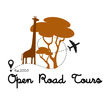
This Itinerary is disabled. Please contact the itinerary creator for more information.
12 DAYS VICTORIA FALLS KRUGER AND CAPE TOWN ADVENTURE
11 Nights
Johannesburg, Victoria Falls (Zimbabwe), Kruger National Park and Cape Town

This Itinerary is disabled. Please contact the itinerary creator for more information.
11 Nights
Johannesburg, Victoria Falls (Zimbabwe), Kruger National Park and Cape Town